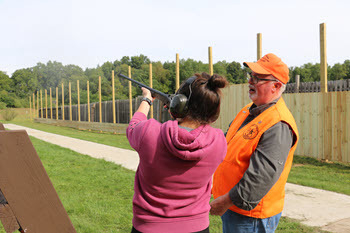The Evolution of a Hunter
By Glen Wunderlich
Charter Member Professional Outdoor Media Association (POMA)
With the realization that I had evolved as a hunter over the years, I never understood that a subtle transformation was only natural. In fact, after learning that there are five distinct stages a hunter experiences in a lifetime, I found myself within the uncanny descriptions to a large extent. Also, what I did not know is that these stages are commonly introduced to those who attend Hunter Education classes throughout the country. A review of these phases may not only define where each of us is in the process, but may foretell one’s future.
- The Shooting Stage. A hunter wants to shoot something – anything to show he was successful. All I have to do is look on the garage wall where many deer antlers are hung to understand that things have changed. I was proud to have taken any of them – even the spikehorns.
- The Limiting-Out Stage. Here the hunter’s focus and definition of success is measured in the amount of game he takes – especially if it involves a legal limit of game. Using a shotgun to take squirrels can put them in the bag and may be good for the brag, but my fascination with .22 rimfire rifles and handguns meant less game. Also, the delicate meat was always no-lead, so one here and there was success enough for me.
- The Trophy Stage. The metamorphosis finds a hunter pursuing certain characteristics of prime animals such as extraordinary antlers or unusual beards on turkeys. To be the envy of fellow hunters and to earn bragging rights, a record-book entry will do the trick. I’ve never been hung up on trophies, although I have a couple in the books; rather, I’ve found that prized animals come along now and then, but it takes a strong amount of faith to believe they will.
- The Method Stage. Using archery gear in firearms season or even a handgun puts one in this box. There is a certain challenge that is coupled with this stage but there is a tradeoff that must be understood. One must be accomplished in his method or he runs the risk of making hunts too difficult for ethical reasons. This stage must include the 9 out of 10 rule: If you can’t make the shot 9 out of 10 times, you are only kidding yourself. Stay within your known limitations above all else.
- The Sportsmen Stage. Hunters will eventually arrive at their peak or are approaching the final years of hunting. The hunt is not as important as the pursuit and fellowship with other hunters. Working a dog on a trail or within a duck blind is the ultimate thrill. Heck, sometimes older hunters don’t carry guns and spend more time with newer hunters ensuring long-time traditions are upheld.
The Giving Back Stage. This stage is often omitted in hunter education manuals, but I find myself here, as well. Food plots are one example of giving more to wildlife than mere taking. As the snow cover makes foraging difficult for whitetails, the turnip plots are still providing nourishment when deer need it most. Planting beneficial shrubs or trees fit into this category, too. Even though we may not see them mature, we do it for the animals’ future welfare.
The circle is completed when hunters pass on knowledge and skills to others in a responsible and ethical way. By so doing, we ensure that our unique traditions will continue beyond our time on earth.







